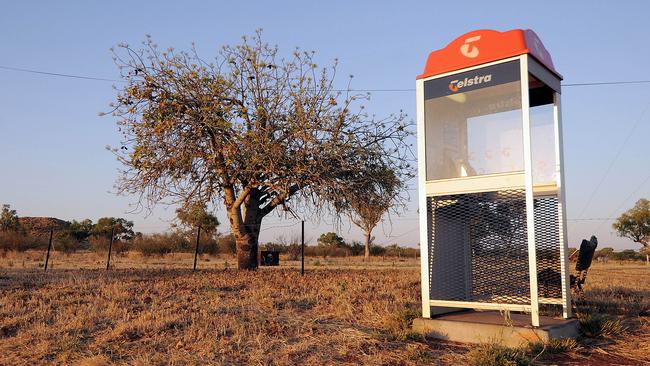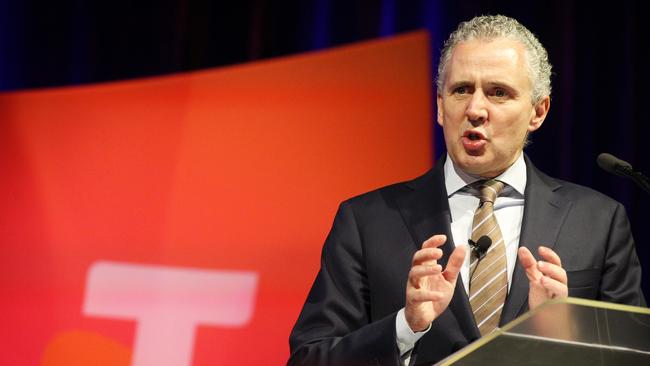Telco Industry rallies against Telstra’s service obligation
YOU don’t expect Telstra’s competitors to be happy, but this time they’re really annoyed. There’s $300m on the line.

PRESSURE is mounting on the government’s Productivity Commission to recommend changes to a key feature of Australia’s universal service obligation (USO) that mandates voice telephone service to those in the bush.
A number of the underlying features of the agreement have been a sore point for many in the industry in recent years, namely the $300 million a year in funding Telstra receives to ensure those who aren’t catered to by the market have access to a standard telephone service.
Roughly half that figure comes from the taxpayer while the rest is raised by an industry levy, meaning the likes of TPG, Optus and Vodafone subsidise Telstra to deliver the services to remote Australians.
Criticisms over its anti-competitive nature and a lack of transparency on how Telstra spends the money have grown increasingly louder with the announcement of the review.
Coupled with the expansion of reliable wireless mobile service to much of the country and the impending ramp up of the NBN, critics claim the agreement is in urgent need of overhaul.
The main questions the commission will grapple with include whether or not the agreement is still necessary and if so, how will it be delivered going forward and at what cost, and to whom.
Michael De Percy is a senior lecturer in political science in the school of government and policy at the University of Canberra and believes the review is an acknowledgment that the current agreement is “leftover from the past”.
He says it would be a “political mistake” to end some form of the USO but said it’s “fairly obvious that it needs to be more transparent”.
“If you wanted to make sure this was actually a transparent solution to the problem of providing service to everyone, then you would expect to be able to know exactly who couldn’t get service and who was being funded through the USO,” he told news.com.au.
“Part of the problem is this is rarely, if ever, been the case.”
The subsidy is largely based on assumptions Telstra makes on the cost to deliver service outside a normal market model.
“Because it’s opaque and Telstra wants to keep it, it’s obvious that it’s to their advantage,” Dr De Percy said.
However Telstra said it welcomes some changes that benefits those in rural areas.
“Telstra is supportive of changes to the USO if they improve the experience for customers, particularly those on regional and rural Australia. On that point we agree with others in the industry as well as many community groups,” a spokesperson told news.com.au.

The 12-month inquiry won’t release its first draft paper until the end of the year, but it has been fielding plenty of submissions from stakeholders and industry groups in the past six weeks.
For its part, Telstra largely wants to keep the USO in its current form but would like to see the rules around the use of different technologies relaxed. But in terms of providing service, the company argues it should remain in its current form at least until the NBN rollout is complete.
In its submission to the Productivity Commission last week, Vodafone slammed the current agreement as “opaque, inefficient, inflexible and outdated model which delivers poor outcomes for consumers at the cost of substantial distortions to competition.”
The telco took issue with the scheme that guarantees $6 billion to Telstra over 20 years “for legacy copper and payphone infrastructure without any serious scrutiny of cost, let alone a cost-benefit analysis”.
Optus expressed a similar sentiment saying the USO is “rooted in principles more applicable to the analog era of telecommunications.”
While TPG said it believed the USO was no longer necessary and lamented having to provide money to Telstra calling it “antithetical to sensible competition policy”.
NBN Co. joined the chorus of those calling for reform claiming the market failures that the USO sought to address nearly three decades ago are no longer relevant.
“At least 98.5 per cent of the population has access to voice services provided by two mobile networks,” the company noted.
“Once the NBN network is complete, NBN will have obligations to provide wholesale access services that result in retail broadband services being available to all premises,” its submission said.
While Dr De Percy understands the argument from the likes of Optus and Vodafone that the subsidy amounts to a market distortion, he doesn’t believe the free market is currently capable of successfully delivering reliable service to all Australians, just yet.
But he said there remained some fundamental questions about how to provide an easier and more transparent solution to the service obligation.
“Does the industry even need to fund this? Why doesn’t the government just pay for those areas where the market won’t pick up?” he said.
He believes a possible outcome from the review is a “rejigged USO” that is largely the responsibility of the NBN and the government.
At any rate, with the completion of the national broadband network edging nearer it’s clear that the USO is on borrowed time, and with it the advantage Telstra has enjoyed for so long.



